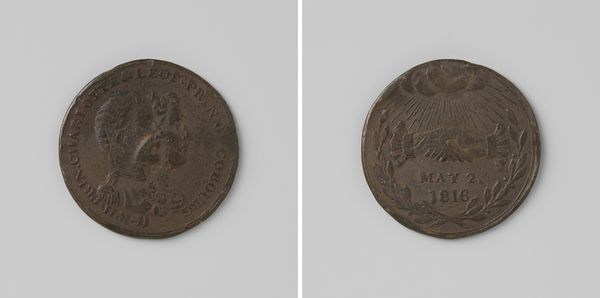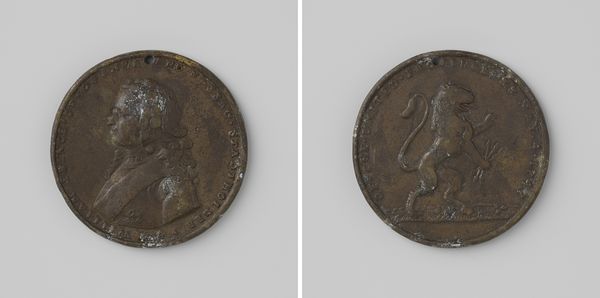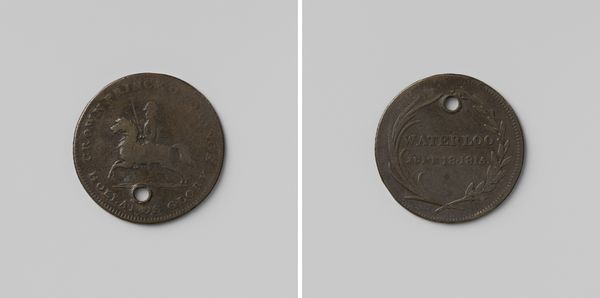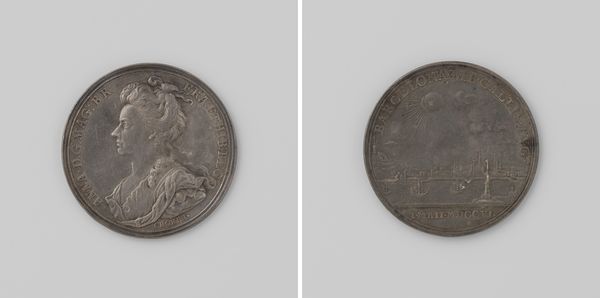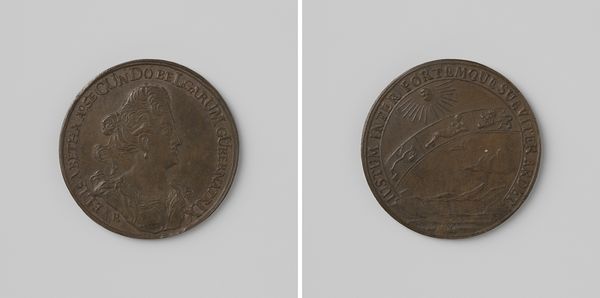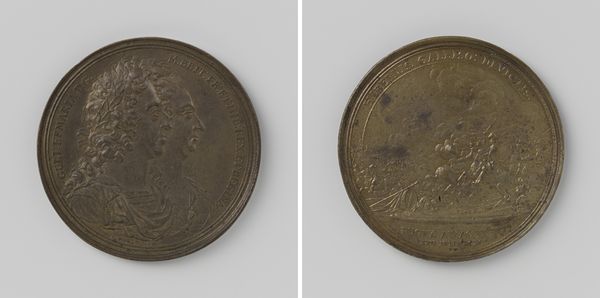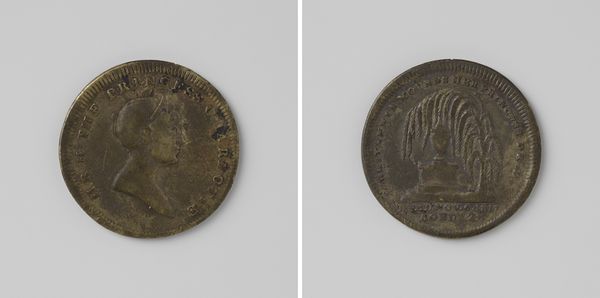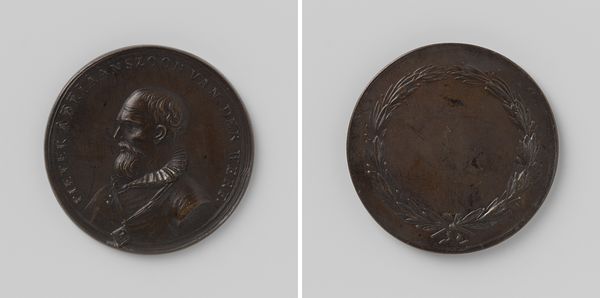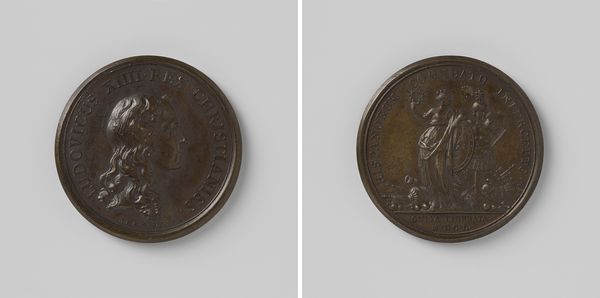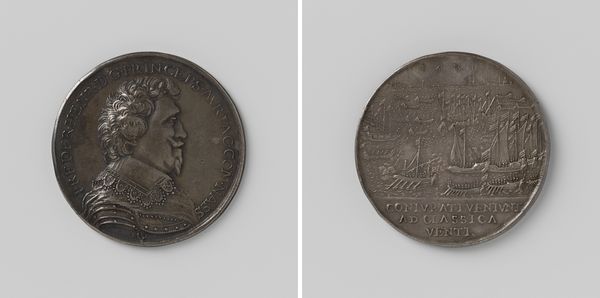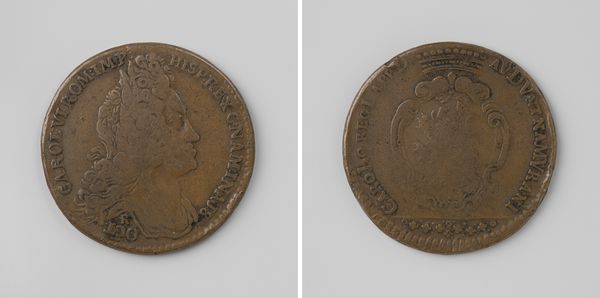
Dimensions: diameter 3.3 cm, weight 17.34 gr
Copyright: Rijks Museum: Open Domain
This bronze medal of William, Duke of Cumberland, was created by Thomas Pingo in the 18th century. Medals like this served as a form of propaganda and commemoration in a period of intense political and military conflict in Europe. The Duke of Cumberland was a prominent military figure, known for his role in suppressing the Jacobite rising of 1745 in Scotland. The medals were often commissioned by governments or political organizations to celebrate military victories and promote patriotic sentiment. On one side, we see a profile of the Duke, adorned with armor, a visual code that conveys power, authority, and military prowess. The inscription, “Gulielmus Dux Cumberlandiae," identifies him by name and title. The reverse side of the medal bears the inscription "PITTO". These medals circulated among elites, reinforcing social hierarchies and power structures. To understand this piece better, we might explore the political history of 18th-century Britain, focusing on the Jacobite rebellions and the role of the monarchy. Contemporary newspapers and pamphlets would shed light on the Duke's public image and the political context in which this medal was created.
Comments
No comments
Be the first to comment and join the conversation on the ultimate creative platform.
